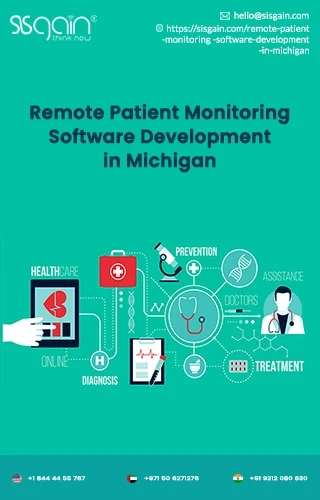According to research, the number of persons in Michigan who have chronic health conditions is close to 60%, and the chronic sickness rates in the metro region are significantly higher than the national average. RPM was previously unknown to the public, but with the introduction of Covid-19, it gained popularity. Remote patient monitoring programs allow patients to keep track of their vital signs without frequently visiting the hospital. Patients can keep track of their health data using various tools and programs.
Given the substantial and widespread advantages for clinicians, it is not surprising that remote patient management systems are being adopted at a rapid rate. RPM allows practitioners to closely monitor a patient's chronic health issues without requiring the patient to physically attend a facility.
Patients listed the following advantages of remote patient monitoring:
Detailed data on individualized healthAccelerated access to medical servicesGreater control over their well-being thanks to ownership of their health information.Professionals in medicine have highlighted:
Better results for patientsHigher rates of complianceMore patients take charge of their healthIn addition to benefits like these, many other elements are driving the rise in the popularity of remote patient monitoring. In light of issues with public health and the difficulties in providing care to an aging population, it appears that RPM will remain a trend. This virtual service is appealing to doctors around the nation as a secure and reliable way to continue providing treatment to some of their most vulnerable patients. SISGAIN is one of the top providers of remote patient monitoring services.
RPM often benefits patients who require chronic, post-discharge, or geriatric care. The use of remote care management is growing rapidly and is very efficient. According to the sickness or problem being experienced, a patient is continuously monitored. All that is needed for the RPM application to function is a device with a reliable connection. Healthcare personnel is informed of the data once it has been captured so they may further analyze it. Mobile medical equipment and software that allows users to submit their data are also examples of RPM technology.
In Michigan, remote patient monitoring systems improved patient involvement while concurrently lowering hospital readmissions. In the 20th century, Michigan's economy saw a severe decline that caused many individuals to lose their employment and leave the place. But the state bounced back from the disaster well and started drawing tourists once more.
How does remote patient monitoring operate?
The methods vary depending on the type of monitoring equipment being used, but they generally employ the same elements. Specific parameters can be measured wirelessly via a sensor, and the gadget can record the results. Through different telemedicine apps created for data collection, this information is also communicated with the healthcare professionals. Leading telemedicine app developer SISGAIN offers trustworthy services with no complaints.
Benefits of Michigan's remote patient monitoring services:
As a result of enhanced patient participation, the patient is better able to comprehend their health situation and make appropriate management decisions.
RPM makes it simpler for patients to record routine tests, which enables the doctors to treat more people, improving access to healthcare.
Constant monitoring is very beneficial for chronic conditions and provides patients and clinicians with peace of mind.
Daily feedback and information on their diseases are given to the patients, who are then educated and supported.
How to Create a Program for Remote Patient Monitoring:
After the COVID-19 epidemic reduced in-person care, RPM use among clinicians increased
quickly.
RPM may be applied in a variety of contexts, but every business intending to launch a new program should start by recognizing a specific need.
Forming a team, identifying goals, and creating the workflow are the next phases. These can be very difficult tasks for low-resource facilities whose workers may already be overworked.
Creating or establishing a platform to assist them in staying connected to their patients and facilitating data flow between the two is another crucial step for the majority of healthcare companies. SISGAIN provides a reliable and cost-effective platform for its clients.
The Michigan region has become the go-to location for entrepreneurs, investors, and innovators who seek to change the future of the healthcare industry by building on a variety of healthcare advances. Modern hospitals, cutting-edge research institutions, and development facilities are all present in the state. RPM is a service with a promising future because the Michigan region, with its exceptional talent and industrial knowledge, positioned enterprises to develop unique, in-demand goods and solutions to solve global medical challenges.
More than half of Michigan's medical facilities are situated in Detroit, a city with strong ties to the healthcare sector. Remote patient monitoring is a requirement that must be adopted by the public to maintain their health and safety in an area that is densely inhabited and expanding. $36 billion is the total yearly effect of the healthcare sector. It is home to several medical institutions renowned for their groundbreaking research and first-rate patient treatment. World-class remote care management and significant telemedicine industry development are in store for the future.


